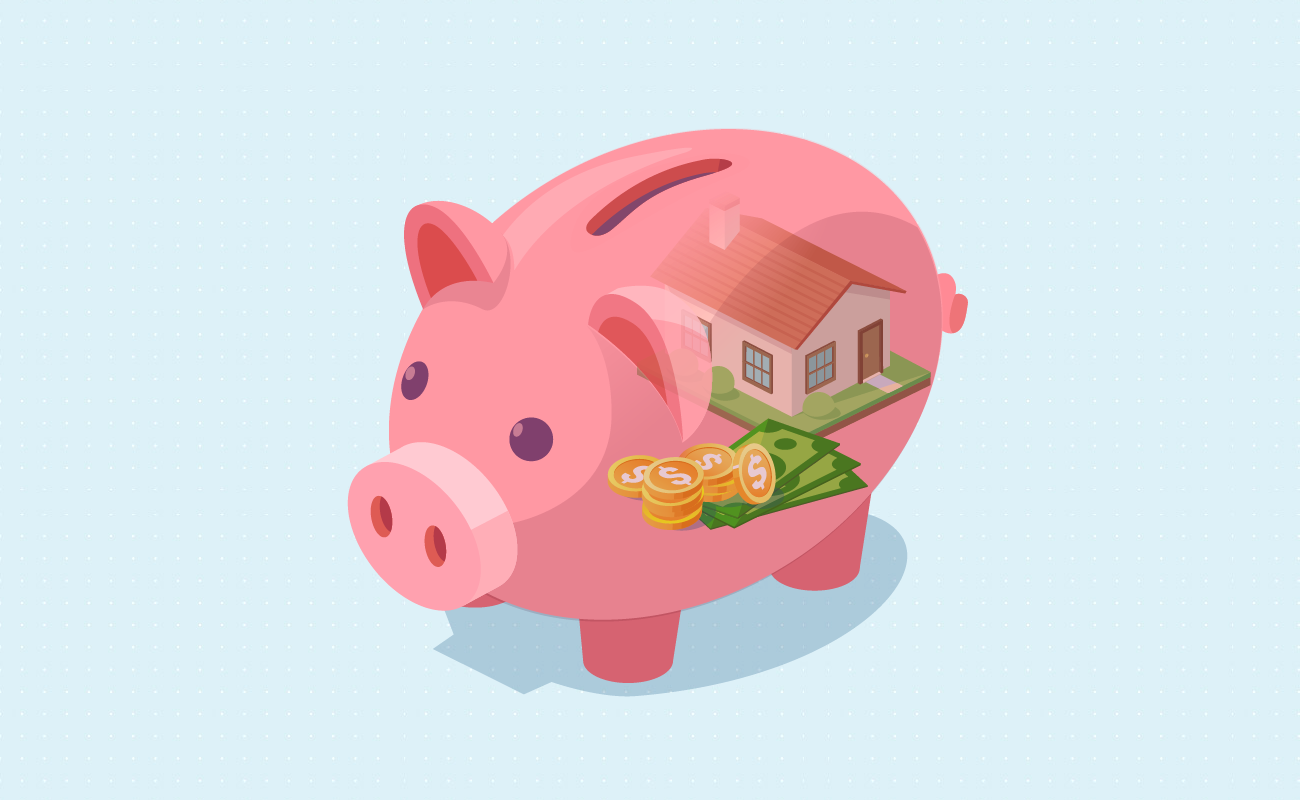Fixed Rates
30 yr
25 yr
20 yr
15 yr
10 yr
Compare Terms
Compare Rates
Real APR
Adjustable Rates
Qualification
Affordability
Renter Affordability
Rent vs Buy
Price per Square Foot
Jumbo
Home Sellers
 FHA Mortgage Calculator
FHA Mortgage CalculatorThis calculator helps buyers estimate their monthly home loan payments for FHA home loans.
Guide published by Jose Abuyuan on September 15, 2020

Buying your first house is a life-changing milestone. It means you’re ready to settle down and tackle major financial responsibilities. But before you can purchase a home, you must qualify for a mortgage. If you lack a stellar credit score, it’s difficult to obtain a loan. On top of this, you must save enough down payment to secure your mortgage.
But don’t worry! Government-backed mortgages such as FHA loans offer less stringent credit qualifications. It also provides low down payment options if you’re strapped for cash. However, FHA loans also come with several disadvantages, which our guide will discuss below.
We’ll help you understand how FHA loans work, as well as its benefits and drawbacks. We’ll also compare it with conventional mortgages, and talk about the requirements such as mortgage insurance premium and FHA loan limits. When you’re well-informed, it will help you decide if FHA loans are right for you.
FHA loans are mortgages backed by the Federal Housing Administration provided by FHA-approved lenders such as banks, mortgage companies, and credit unions. These mortgages are specifically designed for low to moderate income homebuyers who are looking for affordable financing with easier credit standards.
Many first-time homebuyers consider taking FHA loans. It’s a loan purchase tool for people who are still building their savings. The most common FHA loan term is a 30-year fixed rate loan. You can also choose a 15-year or a 20-year fixed-rate mortgage.
Before the FHA was established, people were limited to borrowing 50 to 60 percent of a property’s value. Payment terms were also short, which were spread over three to five years. Most loans were also structured with a balloon payment which made it more difficult for Americans to pay back their mortgage. Thus, only 40 percent of Americans owned their homes at the time.
Once the FHA was in place, people could borrow 80 of a home’s value, with 20 percent as down payment. This lending practice helped structure the mortgage system. It also made it easier for people to qualify for home loans. By 1965, the FHA became part of the U.S. Department of Housing and Urban Development.
Today, the FHA offers financing that requires less than 20 percent down payment. If you have a high enough credit score, you can secure a mortgage as low as 3.5 percent down. With the FHA’s efforts, U.S. homeownership rates increased to 65.3 percent as of Q1 of 2020.
To learn how FHA mortgages can benefit borrowers, we must identify its differentiating features from conventional mortgages.
FHA loans have relaxed standards that allow borrowers to qualify even with low credit scores. You can obtain a mortgage with a minimum credit score of 500. But as a tradeoff, you’re required to make a 10 percent down payment to secure your loan. If you want to take advantage of a lower down payment, you must have a credit score of 580 and above. Once you meet this standard, your down payment can be as low as 3.5 percent.

Making a smaller down payment makes you borrow a larger principal amount. The larger balance will generate higher interest costs over the life of the loan. To increase your interest savings, it pays to save for a higher down payment.
Furthermore, debt-to-income ratio (DTI) requirements are not as strict with FHA loans. DTI ratio is a measure that compares your total monthly debt payments with your gross monthly income. A lower DTI ratio increases your likelihood of loan approval.
There are two main types of DTI ratios:
FHA rates are also lower at the beginning of the mortgage, specifically for people with poor credit scores. But over the years, they get more costly as you build more equity. This is largely due to mortgage insurance premium, which is usually required for the entire life of the loan.

FHA loans impose a mortgage insurance premium for borrowers. This insurance protects the lender in case you default on your loan. It’s paid both as an upfront cost and an annual insurance fee. MIP is mandatory even if you make a 20 percent down payment on your FHA loan. To remove it, many homeowners refinance into a conventional loan.
Homebuyers are charged an upfront MIP which is 1.75 percent of the base loan amount. For example, if you have a $300,000 loan, your upfront MIP will cost $5,250. If you cannot pay it upfront, you have the option to finance. But take note that this will increase your monthly mortgage payment.
On the other hand, the annual MIP is typically 0.85 percent of your loan amount. This is an extra cost that can cancel any savings from low monthly payments. For instance, if your loan balance is $300,000, your annual MIP will cost $2,550. That’s and additional $212.50 per month. The annual MIP cost ranges between 0.45 percent to 1.05 percent of your loan amount.
MIP lasts for the lifetime of 30-year FHA mortgages. Meanwhile, loans with 15-year terms or less have MIP that lasts for 11 years. These payments are deposited in an escrow account by the U.S. Department of Treasury. Again, MIP ensures your lender is covered in case you fail to repay your loan.

Though FHA lenders are not as strict as conventional lenders, borrowers must still submit certain requirements. Apart from your credit score, down payment, and DTI ratio, lenders will scrutinize your credit history. This includes your rent and utility payments. They will also review your employment background for the last two years. If you’ve experienced bankruptcy in the past, you may still qualify for an FHA loan provided you regained a good credit score.
Moreover, you must select an FHA-approved property. Before a lender approves your mortgage, the house must be in good condition to secure the investment. Make sure to choose a home that meets minimum property standards. This applies to both single-unit homes and multi-family homes.
Finally, collect important financial documents. These requirements include the following:
The FHA offers many mortgage options which focus on specific needs. Aside from purchasing a home, they also provide refinancing and home renovation options. Below are some of the most common types of FHA loans obtained by borrowers:
The 203(b) Basic Mortgage Loan is the central financing program offered by the FHA. It was developed to aid borrowers who cannot qualify for a conventional mortgage. This program insures one-unit homes up to four-unit residential properties. It also includes manufactured homes on real estate and condominium units. Under this program, FHA-approved lenders can finance up to 96.5 percent of your home’s value, with down payments as low as 3.5 percent.
This program is ideal for borrowers with limited income but expect their finances to increase over time. It allows you to make small monthly payments at the start. You can choose how the payments will increase for a more comfortable payment time. Section 245(a) gives you the option to pay your mortgage earlier. Through this loan, if you have a 30-year fixed mortgage, you can pay it off as early as 15 years. The program comes with a Growing Equity Mortgage which schedules periodic increases on monthly principal payments. This higher principal payments help shorten your term.
The HECM is reverse mortgage program for borrowers aged 62 and older. It allows you to withdraw equity from your home up to a limited amount while keeping your property’s title. Eligible properties include one-unit to four-unit homes, provided that one unit is occupied by the borrower. It also includes manufactured homes and individual condo units that meet FHA-approved standards. Borrowers can choose to obtain their money as a line of credit, a fixed monthly amount, or as a combination of both.
Section 203(k) allows buyers and homeowners to finance both the purchase of a house and the cost of its renovation. It can also be used to finance the rehabilitation of their current home. The cost of the home improvement must be at least $5,000, which includes structural alterations and full reconstructions. If you’re looking to make upgrades on your home, this program can work for you. You can also use it to make energy conservation improvements. People also use this loan to enhance their home’s accessibility for disabled individuals.
The EEM program finances energy efficient improvements for FHA-insured homes. Houses with poor energy efficiency tend to have higher operating costs. These expensive bills impact your ability to make mortgage payments. Thus, improving your home’s energy efficiency can help you build more savings. If you take this loan, you can upgrade your infrastructure and install new insulation for your property. Any renovations you make should help reduce your utility costs. You can also have solar energy panels installed. The EEM loan can be used as a loan purchase tool and a refinancing option.

Unlike FHA loans, conventional mortgages are not directly insured by the federal government. These loans are usually packaged into mortgage-backed securities guaranteed by Freddie Mac or Fannie Mae. You can obtain conventional loans from private lenders such as banks, mortgage companies, and credit unions.
Since conventional mortgages do not receive government funding, lenders require stricter standards before approving a loan. For this reason, conventional mortgages are more appropriate for borrowers with large funds, higher credit scores, and stable sources of income.
Lenders typically approve a credit score of 680. But to obtain lower rates, it’s better if your credit score is 700 and above. An excellent credit standing qualifies you for prime rates. Applicants must also maintain a lower DTI ratio. For conventional loans, the front-end DTI requirement must not exceed 28 percent, while your back-end DTI should not go over 36 percent. In some cases, it can increase up to 50 percent if you have compensating factors such as a student loan.
For a summary on the differences of FHA loans and conventional loans, see our table below:
| Requirements | FHA Loans | Conventional Mortgages |
|---|---|---|
| Credit score | 580 and above is the ideal score 500 is the minimum | 700 and above is the ideal score 680 is usually approved by lenders |
| Down payment | 3.5% – if your credit score is over 580 10% – if your credit score is below 580 | 20% – removes PMI 10% – the average down payment 3% – minimum required for 97-3 loan |
| Rates | Rates are cheap at the start if you have a low credit score Rates increase over the years as you build home equity | A high credit score qualifies you for a lower rate A low credit score gets you a higher rate A low down payment also decreases your rate |
| Front-end DTI | Should not exceed 31% | Should not exceed 28% |
| Back-end DTI | Should not be higher than 43% With compensating factors, up to 50% | Ideally should not exceed 36% Should not be higher than 43% If you have a student loan, up to 50% |
| Cost | 1.75% of the loan amount – upfront MIP 0.45%-1.05% of the loan amount – annual MIP cost MIP is usually paid for the entire loan | PMI is 0.5%-1% of the loan amount per year PMI is canceled once mortgage balance reaches 78% Average closing cost is typically 2%-5% of the loan |
Despite the relaxed credit requirements and low down payment, there’s a compromise to any benefit. Mortgage insurance premium (PMI) makes FHA loans more expensive in the long-term. As mentioned earlier, it’s an added cost that offsets savings from low monthly payments. It gets more expensive as you gain home equity. For this reason, an FHA 30-year fixed mortgage can be costlier than a conventional loan of the same term.
Next, FHA loans follow prescribed loan limits. If you need a large loan, you might not be able to borrow the amount you need. This depends on the location of the home, with low-cost areas having a lower limit. Moreover, you must consider minimum health and safety standards imposed by the FHA. Because of this, some appraisers may make it difficult to have an old house approved. Lastly, FHA loans are only eligible for primary homes. You cannot use them to buy rental property or vacation houses.
To help you assess the pros and cons of FHA loans, we created the table below:
| Pros | Cons |
|---|---|
| Allows you to qualify with a low credit score and low down payment | Borrowers cannot exceed the FHA loan limit – it has lower loan limits compared to conventional loans |
| Qualify with a high DTI ratio of 43%, can be higher with compensating factors | Required health and safety standard make it hard to approve homes that need fixes |
| Eligible for different housing types such as single-units and multi-family units | Only applies to primary homes, does not include vacation homes or investment property |
| Borrowers with high income but with low credit can still qualify and make a minimum down payment | MIP is required for the entire loan, which is typically removed when you refinance to a conventional loan |
| Low monthly insurance for borrowers with low credit scores vs. conventional loans with high PMI for low credit score borrowers | MIP gets costly over the life of the loan, while PMI gets canceled once you have over 20 percent home equity |
Borrowers can only obtain a limited amount with an FHA loan. These conforming loan limits are determined based on the county where you live and the kind of property you’re buying. Low cost areas have a lower limit referred to as the floor, while high-cost areas have a higher limit called the ceiling.
Moreover, there are special exception areas which have much higher loan limits. These areas include Hawaii, Guam, Alaska, and the U.S. Virgin Islands. In these places, the expensive construction costs make the loan limits a lot higher. But for all other areas, the conforming limit is 115 percent of the median house price in the county.
To estimate the loan limit for your area, you may go to the official FHA mortgage limits page.
As of 2021, FHA loan limits for single-unit homes are $356,362 for low cost areas and $822,375 for high-cost areas. As for special exception areas with a single-unit home, the loan limit is set at $1,233,550.
Below are 2021 FHA loan limits for different housing types:
| Housing Type | Floor – Low-cost Areas | Ceiling – High-cost Areas | Special Exception Areas |
|---|---|---|---|
| One-Unit | $356,362 | $822,375 | $1,233,550 |
| Two-Unit | $456,275 | $1,053,000 | $1,579,500 |
| Three-Unit | $551,500 | $1,272,750 | $1,909,125 |
| Four-Unit | $685,400 | $1,581,750 | $2,372,625 |
The FHA derives mortgage insurance premium (MIP) based on loan-to-value (LTV) ratio. LTV ratio is a percentage that measures the size of your loan in relation to the value of your house. A higher LTV signifies greater risk for lenders. Thus, it’s a good basis for how much lenders can charge for MIP.
For a complete list of 2020 MIP rates according to loan terms, see the tables below.
For FHA Loans Over 15 Years
Borrowers who take a 30-year term or any mortgage longer than 15 years, the annual MIP rates are as follows:
| Base Loan Amount | LTV | Annual MIP |
|---|---|---|
| ≤ $625,500 | ≤ 95% | 80 bps (0.80%) |
| ≤ $625,500 | > 95% | 85 bps (0.85%) |
| >$625,500 | ≤ 95% | 100 bps (1.00%) |
| > $625,500 | > 95% | 105 bps (1.05%) |
For FHA Loans Up to 15 Years
Borrowers who can pay their mortgage with a 15-year term or shorter are assigned lower insurance premiums. Take note of the following MIP rates:
| Base Loan Amount | LTV | Annual MIP |
| ≤ $625,500 | ≤ 90% | 45 bps (0.45%) |
| ≤ $625,500 | > 90% | 70 bps (0.70%) |
| > $625,500 | ≤ 78% | 45 bps (0.45%) |
| > $625,500 | 78.01% to 90% | 70 bps (0.70%) |
| > $625,500 | > 90% | 95 bps (0.95%) |
As for borrowers who originated their FHA loan on or after June 3, 2013, you must pay off your MIP according to the assigned number of years below:
| Term | LTV% | Previous | New |
|---|---|---|---|
| ≤ 15 years | ≤ 78% | no annual MIP | 11 years |
| ≤ 15 years | 78.01% to 90% | canceled at 78% LTV | 11 years |
| ≤ 15 years | > 90% | loan term | loan term |
| > 15 years | ≤ 78% | 5 years | 11 years |
| > 15 years | 78.01% to 90% | canceled at 78% LTV and 5 years | 11 years |
| > 15 years | > 90% | canceled at 78% LTV and 5 years | loan term |

FHA mortgages are popular loan purchase tools for many borrowers. To secure affordable monthly payments, many homebuyers obtain 30-year fixed-rate loans. But how does mortgage insurance impact your payments? And how will a small down payment affect your finances? To find out, let’s use the calculator above to estimate an example.
Let’s suppose you’re buying a house priced at $200,000. When you take the 30-year fixed mortgage, the rate is at 3 percent APR. You’re credit score is 580, which qualifies you to make a 3.5 percent down payment. In the table below, let’s compare how much you’ll spend if you also make a 10 percent and 20 percent down payment.
| Loan Details | 3.5% Down Payment | 10% Down Payment | 20% Down Payment |
|---|---|---|---|
| Loan Amount | $193,000.00 | $180,000 | $160,000 |
| Upfront funding fee | $1,930.00 | $1,800 | $1,600 |
| Monthly interest and principal payment | $821.83 | $766.48 | $674.57 |
| Monthly Taxes, Insurance and MIP payment | $421.41 | $404.53 | $390.00 |
| Total monthly mortgage payment | $1,243.24 | $1,171.01 | $1,064.56 |
| Total interest paid over loan term | $100,929.79 | $94,131.41 | $82,843.92 |
The calculation above does not finance the upfront MIP fee into the loan.
Based on the table, notice how a larger down payment reduces the loan amount. A 3.5 percent down results in a $193,000.00 loan amount, while a 10 percent down reduces your loan to $1,800.00. But if you make a 20 percent down, your loan will decrease to $160,000. Likewise, when the loan amount gets higher, the rest of your mortgage payments increase. This increases your upfront MIP, principal and monthly payment, and monthly taxes and MIP payments.
With a 3.5 percent down, your total monthly mortgage payment will be $1,243.24. On the other hand, a 10 percent down reduces your total monthly mortgage to $1,171.01, while a 20 percent down decreases it to $1,064.56. You save $72.23 on your total monthly payment with a 10 percent down, while you save $178.68 with 20 percent down.
When it comes to interest charges, paying 3.5 percent down will cost $100,929.79 over the life of the loan. However, if you can make a 10 percent down payment, your interest costs decrease to $94,131.41. That’s savings worth $6,798.38. Meanwhile, if you make a 20 percent down, your total interest charges will be $82,843.92. It will save you a total of $18,085.87 compared to paying 3.5 percent down.
This example shows us it’s worth making a higher down payment to save on interest costs. Though saving for 20 percent down might take you a bit longer, try to gather as much down payment as you can. Even a 10 percent down can significantly reduce your monthly payments and overall interest charges.
Over the time, once your credit score increases, you may consider refinancing. This allows you to shift to a conventional loan to get rid MIP. Doing so can help you save thousands of dollars on lifetime insurance charges. Refinancing also allows you to secure a lower rate to maximize your interest savings.
FHA loans are geared towards borrowers with low credit scores and limited savings. They are also marketed as an ideal option for first-time homebuyers looking for easier credit qualifications and low down payment options. Borrowers can obtain an FHA loan even with a low credit score of 500, as long as they make a 10 percent down payment.
Despite these benefits, FHA loans have their disadvantages. They require mortgage insurance premium (MIP) which usually lasts for the lifetime of the loan. This added cost makes your mortgage more expensive the further you gain equity. Conventional loans, on the other hand, only require private mortgage insurance (PMI) for a certain period. It’s automatically canceled once your mortgage balance reaches 78 percent. Homeowners with an FHA loan can refinance to conventional loan to eliminate MIP.
Want to learn more about refinancing your home loan? Read our guide on our mortgage refinancing calculator.